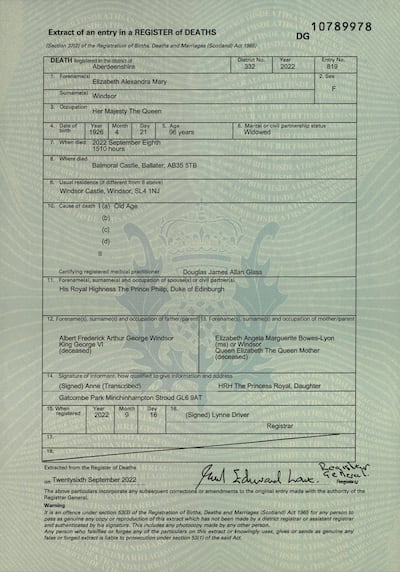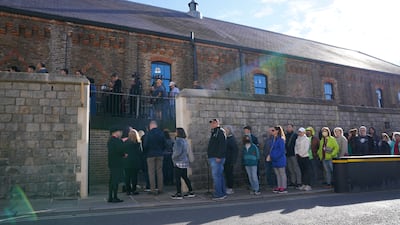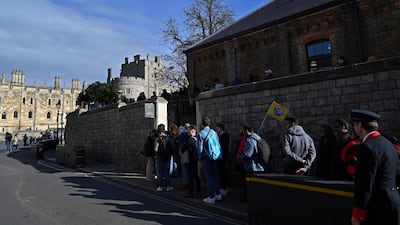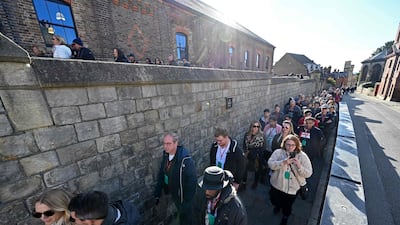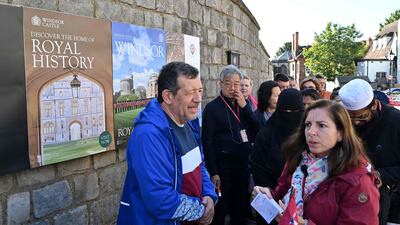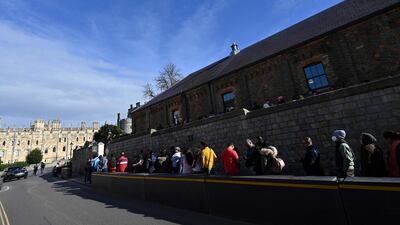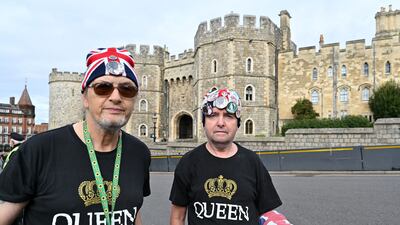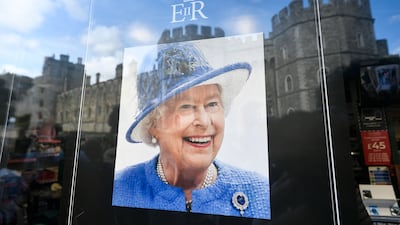Queen Elizabeth II's cause of death was old age, her death certificate has shown.
The document, published by the National Records of Scotland (NRS) on Thursday, showed the UK monarch died at 3.10pm on September 8 at Balmoral Castle in Ballater.
The document has been signed by Princess Anne, the Princess Royal, and the cause of death is listed as old age.
The queen died at her Balmoral estate while members of her family — Prince William, Prince Andrew, Prince Edward and his wife Sophie, Countess of Wessex — were en route to see her.
Old age was the only cause of death recorded on the document. The queen stepped back from public life in the year before her death owing to health problems.
Douglas James Allan Glass is noted as the certifying registered medical practitioner.
Paul Lowe, registrar general for Scotland, said the queen’s death was registered in Aberdeenshire on September 16.
The death certificate was released on Thursday, the same day Windsor Castle was reopened to the public after her death.
Mourners are allowed to see her final resting place at Windsor.
Here is how the day of her death unfolded. At 12.32pm, Buckingham Palace said doctors were concerned about the queen’s health. She was comfortable and under medical supervision, it said.
At 12.45pm Clarence House said Prince Charles, who is now king, and Camilla, now queen consort, travelled to Balmoral. A minute later, Kensington Palace said Prince William, now the Prince of Wales, would also travel north.
At 2.39pm Royal Air Force Flight KRF23R took off from RAF Northolt in South Ruislip, west London, flight tracking website Flightradar24.com showed. The plane carried Prince William, Prince Andrew, Prince Edward and the Countess of Wessex.
At 3.10pm the queen died with Princess Anne by her side.
The plane landed in Aberdeen airport at 3.50pm.
After 5pm, a fleet of cars, including a Range Rover driven by Prince William and carrying Prince Andrew, Prince Edward and Sophie, arrived at Balmoral.
At 6.30pm Buckingham Palace said: “The queen died peacefully at Balmoral this afternoon.
“The king and the queen consort will remain at Balmoral this evening and will return to London tomorrow.”
The National's picks
4.35pm: Tilal Al Khalediah
5.10pm: Continous
5.45pm: Raging Torrent
6.20pm: West Acre
7pm: Flood Zone
7.40pm: Straight No Chaser
8.15pm: Romantic Warrior
8.50pm: Calandogan
9.30pm: Forever Young
The major Hashd factions linked to Iran:
Badr Organisation: Seen as the most militarily capable faction in the Hashd. Iraqi Shiite exiles opposed to Saddam Hussein set up the group in Tehran in the early 1980s as the Badr Corps under the supervision of the Iran Revolutionary Guards Corps (IRGC). The militia exalts Iran’s Supreme Leader Ali Khamenei but intermittently cooperated with the US military.
Saraya Al Salam (Peace Brigade): Comprised of former members of the officially defunct Mahdi Army, a militia that was commanded by Iraqi cleric Moqtada Al Sadr and fought US and Iraqi government and other forces between 2004 and 2008. As part of a political overhaul aimed as casting Mr Al Sadr as a more nationalist and less sectarian figure, the cleric formed Saraya Al Salam in 2014. The group’s relations with Iran has been volatile.
Kataeb Hezbollah: The group, which is fighting on behalf of the Bashar Al Assad government in Syria, traces its origins to attacks on US forces in Iraq in 2004 and adopts a tough stance against Washington, calling the United States “the enemy of humanity”.
Asaeb Ahl Al Haq: An offshoot of the Mahdi Army active in Syria. Asaeb Ahl Al Haq’s leader Qais al Khazali was a student of Mr Al Moqtada’s late father Mohammed Sadeq Al Sadr, a prominent Shiite cleric who was killed during Saddam Hussein’s rule.
Harakat Hezbollah Al Nujaba: Formed in 2013 to fight alongside Mr Al Assad’s loyalists in Syria before joining the Hashd. The group is seen as among the most ideological and sectarian-driven Hashd militias in Syria and is the major recruiter of foreign fighters to Syria.
Saraya Al Khorasani: The ICRG formed Saraya Al Khorasani in the mid-1990s and the group is seen as the most ideologically attached to Iran among Tehran’s satellites in Iraq.
(Source: The Wilson Centre, the International Centre for the Study of Radicalisation)
The Bio
Hometown: Bogota, Colombia
Favourite place to relax in UAE: the desert around Al Mleiha in Sharjah or the eastern mangroves in Abu Dhabi
The one book everyone should read: 100 Years of Solitude by Gabriel Garcia Marquez. It will make your mind fly
Favourite documentary: Chasing Coral by Jeff Orlowski. It's a good reality check about one of the most valued ecosystems for humanity
THE SIXTH SENSE
Starring: Bruce Willis, Toni Collette, Hayley Joel Osment
Director: M. Night Shyamalan
Rating: 5/5
Results
6.30pm: Maiden (TB) Dh82,500 (Dirt) 1,200m; Winner: Major Cinnamon, Fernando Jara, Mujeeb Rahman
7.05pm: Maiden (TB) Dh82,500 (D) 1,900m; Winner: Al Mureib, Fernando Jara, Ahmad bin Harmash
7.40pm: Handicap (TB) Dh102,500 (D) 2,000m; Winner: Remorse, Tadhg O’Shea, Satish Seemar
8.15pm: Conditions (TB) Dh120,000 (D) 1,600m; Winner: Meshakel, Xavier Ziani, Salem bin Ghadayer
8.50pm: Handicap (TB) Dh95,000 (D) 1,600m; Winner: Desert Peace, William Buick, Charlie Appleby
9.25pm: Handicap (TB) Dh87,500 (D) 1,400m; Winner: Sharamm, Ryan Curatlo, Satish Seemar
More coverage from the Future Forum
UAE currency: the story behind the money in your pockets
Fixtures and results:
Wed, Aug 29:
- Malaysia bt Hong Kong by 3 wickets
- Oman bt Nepal by 7 wickets
- UAE bt Singapore by 215 runs
Thu, Aug 30:
- UAE bt Nepal by 78 runs
- Hong Kong bt Singapore by 5 wickets
- Oman bt Malaysia by 2 wickets
Sat, Sep 1: UAE v Hong Kong; Oman v Singapore; Malaysia v Nepal
Sun, Sep 2: Hong Kong v Oman; Malaysia v UAE; Nepal v Singapore
Tue, Sep 4: Malaysia v Singapore; UAE v Oman; Nepal v Hong Kong
Thu, Sep 6: Final
Real estate tokenisation project
Dubai launched the pilot phase of its real estate tokenisation project last month.
The initiative focuses on converting real estate assets into digital tokens recorded on blockchain technology and helps in streamlining the process of buying, selling and investing, the Dubai Land Department said.
Dubai’s real estate tokenisation market is projected to reach Dh60 billion ($16.33 billion) by 2033, representing 7 per cent of the emirate’s total property transactions, according to the DLD.
